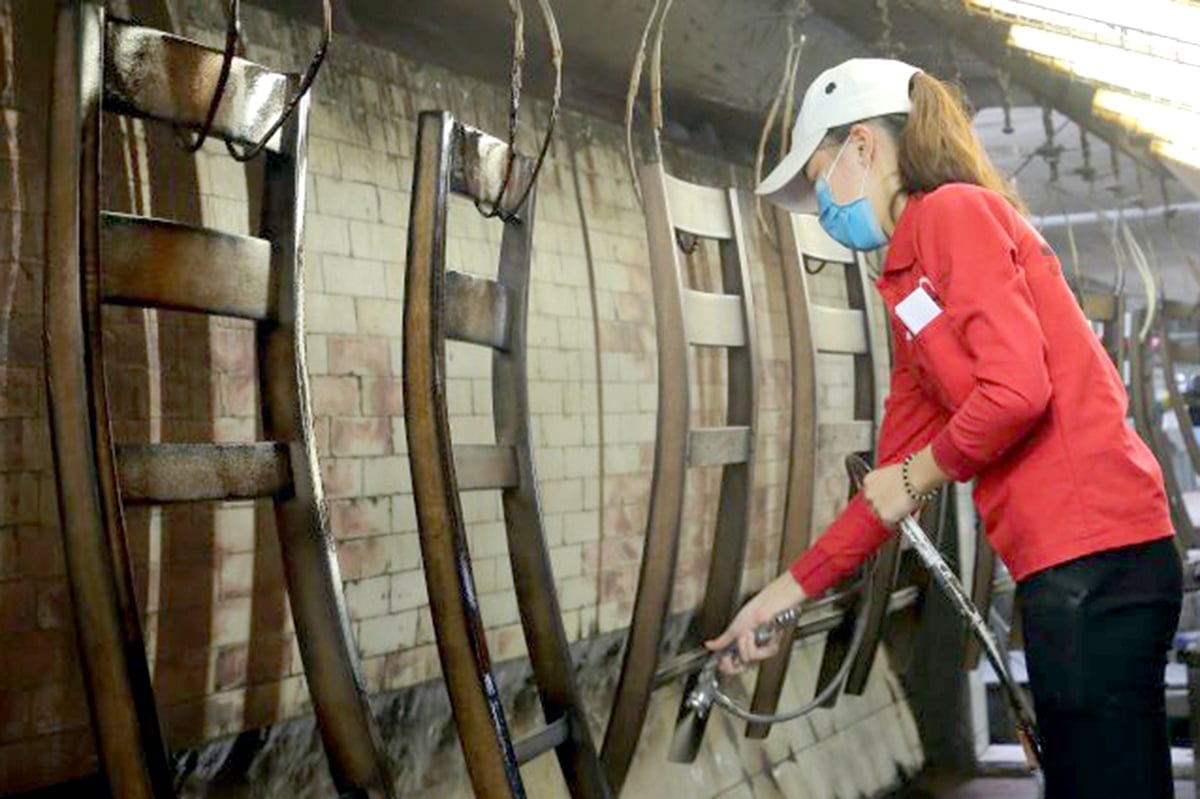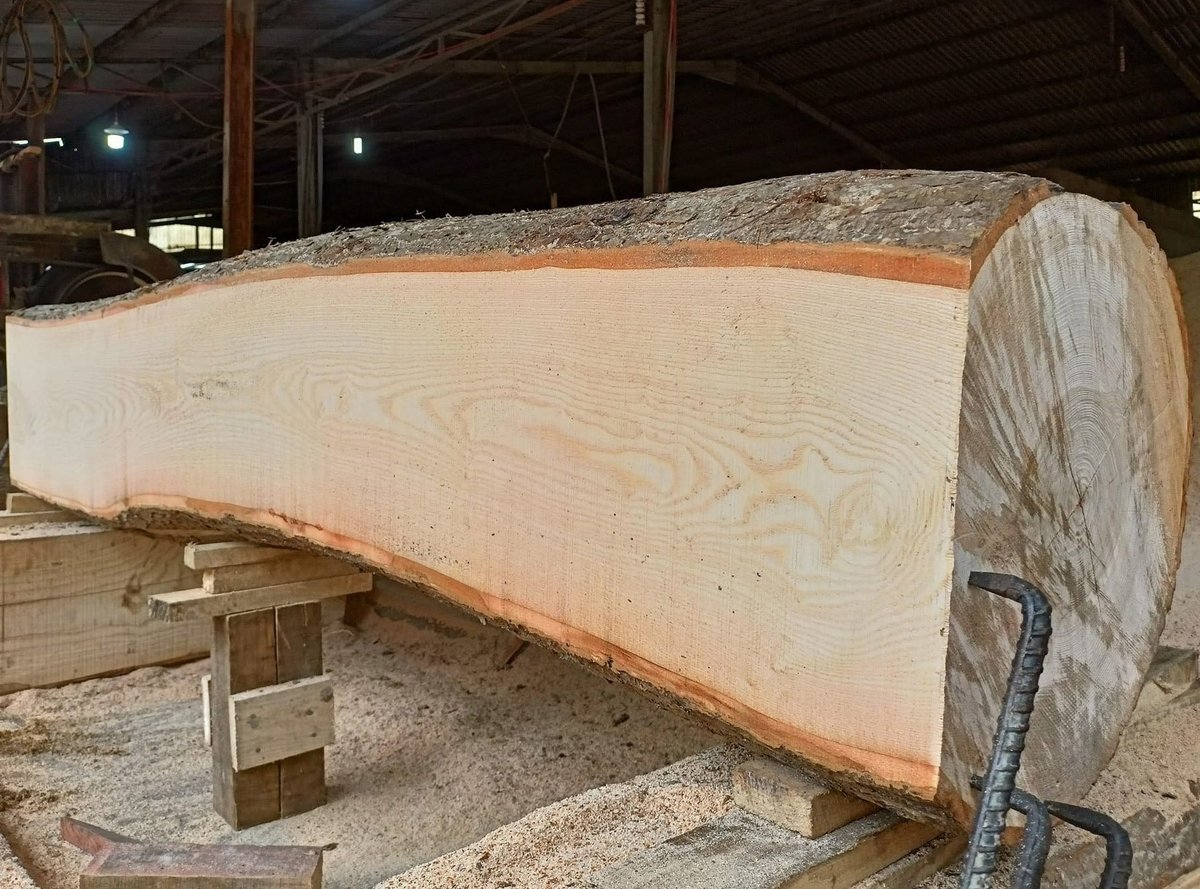November 20, 2025 | 12:01 GMT +7
November 20, 2025 | 12:01 GMT +7
Hotline: 0913.378.918
November 20, 2025 | 12:01 GMT +7
Hotline: 0913.378.918

Workers painting wooden chair frames at a factory in Ho Chi Minh City. Photo: Thanh Son.
The wood industry is one of the sectors most affected by US countervailing duties, as this market still accounts for more than half of the export value of wood and wood products.
Data from Vietnam Customs shows that in the first 6 months of 2025, Vietnam's exports of wood and wood products reached USD 8.2 billion, up 8.4% compared to the same period in 2024. Of this, exports of wood and wood products to the US reached USD 4.6 billion, up 12% compared to the same period in 2024 and accounting for 56% of the total export value.
Notably, the US market continues to increase its share in Vietnam's exports of wood and wood products. In the first 6 months of 2024, the US accounted for 54% of the total export value, while in the first 6 months of 2025, this figure rose to 56%. This positive growth demonstrates the quick and flexible adaptability of Vietnamese enterprises in the face of increasingly stringent technical and tariff barriers.
The biggest challenge for Vietnam's wood industry in the remaining five months of this year is the US countervailing duties. Phung Quoc Man, Chairman of the Handicraft and Wood Industry Association of Ho Chi Minh City (HAWA), stated that countervailing duties will significantly affect the industry's export growth.
However, with a tariff rate of 20%, Vietnamese wood enterprises remain relatively optimistic about the US market. Mr. Man explained that other countries competing in exporting wood to the US, such as Thailand and Indonesia, face a countervailing duty rate of 19%, just 1% lower than Vietnam. This difference is considered negligible.
Meanwhile, in recent years, Vietnam's wood industry has built its brand and established a strong position in the US market (Vietnam is currently the largest supplier of wooden furniture to the US). When countervailing duties officially take effect, the tax burden will be shared among manufacturers, importers, and retailers to maintain the supply chain. These factors will help Vietnamese wooden products continue to enter and sustain their presence in the US market.
In addition, to maintain competitive advantages, many enterprises have proactively invested heavily in advanced processing technology to enhance the added value of products instead of focusing solely on raw exports. Some enterprises have also strengthened the adoption of international certifications for sustainable forest management (FSC), which facilitates entry into demanding markets while building long-term credibility. This is seen as a strategic step for Vietnam's wood industry to reduce dependence on pricing factors and increase resilience against global tariff policy fluctuations.

Vietnam is increasing imports of wood materials from the United States. Photo: Thanh Son.
In particular, to help reduce the imbalance in the trade of wooden goods in particular and overall goods between Vietnam and the US, this year, Vietnam's wood industry has sharply increased imports of raw wood materials from the US.
Nguyen Liem, Vice Chairman of the Vietnam Timber and Forest Product Association (VIFORES), said that in the first 7 months of the year, imports of logs and sawn timber from the US exceeded 800,000 cubic meters, worth over USD 320 million. Both import volume and value surpassed those of 2024. This confirms the goodwill of Vietnamese wood enterprises in contributing to reducing Vietnam's trade surplus with the US while sharing difficulties with US wood enterprises, whose raw wood materials are facing challenges in exporting to other markets.
By the end of July, Vietnam's exports of wood and wood products had reached USD 9.6 billion, up 8.1% compared to the same period last year. Mr. Man noted that in the last 5 months of this year, monthly exports of Vietnam's wood and wood products will reach USD 6.5 billion, averaging USD 1.3 billion per month, thereby bringing full-year exports to USD 16.1–16.2 billion. However, he still expects that exports of wood and wood products this year could approach USD 17 billion if market conditions become more favorable.
Mr. Nguyen Liem added that if, in the coming months, US importers reduce purchases of wooden furniture from China (the second-largest supplier of wooden furniture to the US) due to high tariffs and increase purchases from Vietnam, exports of wood and wood products this year could reach USD 17 billion.
In the context of global trade being strongly impacted by US tax policy changes and supply chain shifts, Vietnam's exports of wood and wood products to the US still recorded positive growth in the first half of 2025.
Translated by Huong Giang

(VAN) The price of Arabica Catimor coffee in Quang Tri is currently at VND 25,000–27,000/kg (fresh cherries), the highest level ever recorded

(VAN) 'From the coffee story, we can think deeper and further about the crop production sector - from development orientations and value-chain organization to international integration,' assessed Dr Le Quoc Doanh.
/2025/11/18/2431-0-161627_248.jpg)
(VAN) Viet Nam accounts for 43% of the world's export volume of Robusta coffee. However, the Vietnamese Robusta coffee brand has yet to gain broad recognition on the global market.
/2025/11/18/5617-2-125215_406.jpg)
(VAN) The consumption demand for premium, healthy, and cold-brew tea products is rising globally, including in the Thai market, opening new opportunities for Viet Nam.

(VAN) The 3F+ model aims for selective resource management, regenerative protection, green education and consumption, all intrinsic to Dabaco’s sustainable development strategy.

(VAN) Carefully packed tea bags, neatly arranged inside containers, begin their 5,000-kilometer journey to Afghanistan, carrying with them the aroma of mountain forests and the pride of Lai Chau province.

(VAN) 'If we can address disease challenges and properly plan farming zones, Vietnamese shrimp can absolutely rise to lead the world,' Mr. Le Van Quang affirmed.